- Home
- Albert Camus
Resistance, Rebellion, and Death Page 20
Resistance, Rebellion, and Death Read online
Page 20
Likewise, the artist can neither turn away from his time nor lose himself in it. If he turns away from it, he speaks in a void. But, conversely, insofar as he takes his time as his object, he asserts his own existence as subject and cannot give in to it altogether. In other words, at the very moment when the artist chooses to share the fate of all, he asserts the individual he is. And he cannot escape from this ambiguity. The artist takes from history what he can see of it himself or undergo himself, directly or indirectly—the immediate event, in other words, and men who are alive today, not the relationship of that immediate event to a future that is invisible to the living artist. Judging contemporary man in the name of a man who does not yet exist is the function of prophecy. But the artist can value the myths that are offered him only in relation to their repercussion on living people. The prophet, whether religious or political, can judge absolutely and, as is known, is not chary of doing so. But the artist cannot. If he judged absolutely, he would arbitrarily divide reality into good and evil and thus indulge in melodrama. The aim of art, on the contrary, is not to legislate or to reign supreme, but rather to understand first of all. Sometimes it does reign supreme, as a result of understanding. But no work of genius has ever been based on hatred and contempt. This is why the artist, at the end of his slow advance, absolves instead of condemning. Instead of being a judge, he is a justifier. He is the perpetual advocate of the living creature, because it is alive. He truly argues for love of one’s neighbor and not for that love of the remote stranger which debases contemporary humanism until it becomes the catechism of the law court. Instead, the great work eventually confounds all judges. With it the artist simultaneously pays homage to the loftiest figure of mankind and bows down before the worst of criminals. “There is not,” Wilde wrote in prison, “a single wretched man in this wretched place along with me who does not stand in symbolic relation to the very secret of life.” Yes, and that secret of life coincides with the secret of art.
For a hundred and fifty years the writers belonging to a mercantile society, with but few exceptions, thought they could live in happy irresponsibility. They lived, indeed, and then died alone, as they had lived. But we writers of the twentieth century shall never again be alone. Rather, we must know that we can never escape the common misery and that our only justification, if indeed there is a justification, is to speak up, insofar as we can, for those who cannot do so. But we must do so for all those who are suffering at this moment, whatever may be the glories, past or future, of the States and parties oppressing them: for the artist there are no privileged torturers. This is why beauty, even today, especially today, cannot serve any party; it cannot serve, in the long or short run, anything but men’s suffering or their liberty. The only really committed artist is he who, without refusing to take part in the combat, at least refuses to join the regular armies and remains a free-lance. The lesson he then finds in beauty, if he draws it fairly, is a lesson not of selfishness but rather of hard brotherhood. Looked upon thus, beauty has never enslaved anyone. And for thousands of years, every day, at every second, it has instead assuaged the servitude of millions of men and, occasionally, liberated some of them once and for all. After all, perhaps the greatness of art lies in the perpetual tension between beauty and pain, the love of men and the madness of creation, unbearable solitude and the exhausting crowd, rejection and consent. Art advances between two chasms, which are frivolity and propaganda. On the ridge where the great artist moves forward, every step is an adventure, an extreme risk. In that risk, however, and only there, lies the freedom of art. A difficult freedom that is more like an ascetic discipline? What artist would deny this? What artist would dare to claim that he was equal to such a ceaseless task? Such freedom presupposes health of body and mind, a style that reflects strength of soul, and a patient defiance. Like all freedom, it is a perpetual risk, an exhausting adventure, and this is why people avoid the risk today, as they avoid liberty with its exacting demands, in order to accept any kind of bondage and achieve at least comfort of soul. But if art is not an adventure, what is it and where is its justification? No, the free artist is no more a man of comfort than is the free man. The free artist is the one who, with great effort, creates his own order. The more undisciplined what he must put in order, the stricter will be his rule and the more he will assert his freedom. There is a remark of Gide that I have always approved although it may be easily misunderstood: “Art lives on constraint and dies of freedom.” That is true. But it must not be interpreted as meaning that art can be controlled. Art lives only on the constraints it imposes on itself; it dies of all others. Conversely, if it does not constrain itself, it indulges in ravings and becomes a slave to mere shadows. The freest art and the most rebellious will therefore be the most classical; it will reward the greatest effort. So long as a society and its artists do not accept this long and free effort, so long as they relax in the comfort of amusements or the comfort of conformism, in the games of art for art’s sake or the preachings of realistic art, its artists are lost in nihilism and sterility. Saying this amounts to saying that today the rebirth depends on our courage and our will to be lucid.
Yes, the rebirth is in the hands of all of us. It is up to us if the West is to bring forth any anti-Alexanders to tie together the Gordian Knot of civilization cut by the sword. For this purpose, we must assume all the risks and labors of freedom. There is no need of knowing whether, by pursuing justice, we shall manage to preserve liberty. It is essential to know that, without liberty, we shall achieve nothing and that we shall lose both future justice and ancient beauty. Liberty alone draws men from their isolation; but slavery dominates a crowd of solitudes. And art, by virtue of that free essence I have tried to define, unites whereas tyranny separates. It is not surprising, therefore, that art should be the enemy marked out by every form of oppression. It is not surprising that artists and intellectuals should have been the first victims of modern tyrannies, whether of the Right or of the Left. Tyrants know there is in the work of art an emancipatory force, which is mysterious only to those who do not revere it. Every great work makes the human face more admirable and richer, and this is its whole secret. And thousands of concentration camps and barred cells are not enough to hide this staggering testimony of dignity. This is why it is not true that culture can be, even temporarily, suspended in order to make way for a new culture. Man’s unbroken testimony as to his suffering and his nobility cannot be suspended; the act of breathing cannot be suspended. There is no culture without legacy, and we cannot and must not reject anything of ours, the legacy of the West. Whatever the works of the future may be, they will bear the same secret, made up of courage and freedom, nourished by the daring of thousands of artists of all times and all nations. Yes, when modern tyranny shows us that, even when confined to his calling, the artist is a public enemy, it is right. But in this way tyranny pays its respects, through the artist, to an image of man that nothing has ever been able to crush.
My conclusion will be simple. It will consist of saying, in the very midst of the sound and the fury of our history: “Let us rejoice.” Let us rejoice, indeed, at having witnessed the death of a lying and comfort-loving Europe and at being faced with cruel truths. Let us rejoice as men because a prolonged hoax has collapsed and we see clearly what threatens us. And let us rejoice as artists, torn from our sleep and our deafness, forced to keep our eyes on destitution, prisons, and bloodshed. If, faced with such a vision, we can preserve the memory of days and of faces, and if, conversely, faced with the world’s beauty, we manage not to forget the humiliated, then Western art will gradually recover its strength and its sovereignty. To be sure, there are few examples in history of artists confronted with such hard problems. But when even the simplest words and phrases cost their weight in freedom and blood, the artist must learn to handle them with restraint. Danger makes men classical, and all greatness, after all, is rooted in risk.
The time of irresponsible artists is over. We shall regret it for our litt
le moments of bliss. But we shall be able to admit that this ordeal contributes meanwhile to our chances of authenticity, and we shall accept the challenge. The freedom of art is not worth much when its only purpose is to assure the artist’s comfort. For a value or a virtue to take root in a society, there must be no lying about it; in other words, we must pay for it every time we can. If liberty has become dangerous, then it may cease to be prostituted. And I cannot agree, for example, with those who complain today of the decline of wisdom. Apparently they are right. Yet, to tell the truth, wisdom has never declined so much as when it involved no risks and belonged exclusively to a few humanists buried in libraries. But today, when at last it has to face real dangers, there is a chance that it may again stand up and be respected.
It is said that Nietzsche after the break with Lou Salomé, in a period of complete solitude, crushed and uplifted at the same time by the perspective of the huge work he had to carry on without any help, used to walk at night on the mountains overlooking the gulf of Genoa and light great bonfires of leaves and branches which he would watch as they burned. I have often dreamed of those fires and have occasionally imagined certain men and certain works in front of those fires, as a way of testing men and works. Well, our era is one of those fires whose unbearable heat will doubtless reduce many a work to ashes! But as for those which remain, their metal will be intact, and, looking at them, we shall be able to indulge without restraint in the supreme joy of the intelligence which we call “admiration.”
One may long, as I do, for a gentler flame, a respite, a pause for musing. But perhaps there is no other peace for the artist than what he finds in the heat of combat. “Every wall is a door,” Emerson correctly said. Let us not look for the door, and the way out, anywhere but in the wall against which we are living. Instead, let us seek the respite where it is—in the very thick of the battle. For in my opinion, and this is where I shall close, it is there. Great ideas, it has been said, come into the world as gently as doves. Perhaps then, if we listen attentively, we shall hear, amid the uproar of empires and nations, a faint flutter of wings, the gentle stirring of life and hope. Some will say that this hope lies in a nation; others, in a man. I believe rather that it is awakened, revived, nourished by millions of solitary individuals whose deeds and works every day negate frontiers and the crudest implications of history. As a result, there shines forth fleetingly the ever threatened truth that each and every man, on the foundation of his own sufferings and joys, builds for all.
BOOKS BY ALBERT CAMUS
Awarded the Nobel Prize for Literature in 1957
The First Man (Le Premier Homme) 1995
A Happy Death (La Mort Heureuse) 1972
Notebooks 1942–1951 (Carnets, janvier 1942–mars 1951) 1965
Notebooks 1935–1942 (Carnets, mai 1935–février 1942) 1963
Resistance, Rebellion, and Death
(Actuelles—a selection) 1961
The Possessed (Les Possédés) 1960
Caligula and Three Other Plays
(Caligula, Le Malentendu, L’Etat de siège, Les Justes) 1958
Exile and the Kingdom (L’Exil et le Royaume) 1958
The Fall (La Chute) 1957
The Myth of Sisyphus (Le Mythe de Sisyphe)
and Other Essays 1955
The Rebel (L’Homme Róvolté) 1954
The Plague (La Peste) 1948
The Stranger (L’Etranger) 1946
ALBERT CAMUS
ALBERT CAMUS was born in Algeria in 1913. He spent the early years of his life in North Africa, where he became a journalist, and from 1935 to 1938 he ran the Théâtre de l’Équipe, a company that produced plays by Malraux, Gide, Synge, Dostoyevsky, and others. During World War II he was one of the leading writers of the French Resistance and editor of Combat, an underground newspaper he helped found. His fiction, including The Stranger, The Plague, The Fall, and Exile and the Kingdom; his philosophical essays, The Myth of Sisyphus and The Rebel; and his plays have assured his preeminent position in modern letters. In 1957, Camus was awarded the Nobel Prize for Literature. Upon his untimely death in a road accident in 1960, Jean-Paul Sartre wrote, “Camus could never cease to be one of the principal forces in our cultural domain, nor to represent, in his own way, the history of France and this century.”
ALSO BY
Albert Camus
Winner of the Nobel Prize for Literature
THE FIRST MAN
In The First Man Albert Camus tells the story of Jacques Cormery, a boy who lived a life much like Camus’ own. Camus summons up the sights, sounds, and textures of a childhood circumscribed by poverty and a father’s death yet redeemed by the austere beauty of Algeria and the boy’s attachment to his nearly deaf-mute mother. The result is a moving journey through the lost landscape of youth that also discloses the wellsprings of Camus’ aesthetic powers and moral vision. Published thirty-five years after its discovery amid the wreckage of the car accident that killed its author, The First Man is the brilliant consummation of the life and work of one of the twentieth century’s greatest novelists.
Fiction/Literature
EXILE AND THE KINGDOM
From a variety of masterfully rendered perspectives, these six stories depict people at painful odds with the world around them. A wife can only surrender to a desert night by betraying her husband. An artist struggles to honor his own aspirations as well as society’s expectations of him. A missionary brutally converted to the worship of a tribal fetish is left with but an echo of his identity. Whether set in North Africa, Paris, or Brazil, the stories in Exile and the Kingdom are probing portraits of spiritual exile and man’s perpetual search for an inner kingdom in which to be reborn. They display Camus at the height of his powers.
Fiction/Literature
THE FALL
Mordant, brilliant, elegantly styled, The Fall is a novel of the conscience of modern man in the face of evil. In a seedy bar in Amsterdam, Clamence, an expatriate Frenchman, indulges in a calculated confession. He recalls his past life as a respected Parisian lawyer, a champion of noble causes, and, privately, a libertine—yet one apparently immune to judgment. As his narrative unfolds, ambiguities amass; every triumph reveals a failure, every motive a hidden treachery. The irony of his recital anticipates his downfall—and implicates us all.
Fiction/Literature
A HAPPY DEATH
In his first novel, A Happy Death, written when he was in his early twenties and retrieved from his private papers following his death in 1960, Albert Camus laid the foundation for the The Stranger, focusing in both works on an Algerian clerk who kills a man in cold blood. But he also revealed himself to an extent that he never did in his later fiction. For if A Happy Death is the study of a rule-bound being shattering the fetters of his existence, it is also a remarkably candid portrait of its author as a young man.
Fiction/Literature
THE MYTH OF SISYPHUS AND OTHER ESSAYS
One of the most influential works of this century, The Myth of Sisyphus and Other Essays is a crucial exposition of existential thought. Influenced by works such as Don Juan and the novels of Kafka, these essays begin with a meditation on suicide: the question of living or not living in a universe devoid of order or meaning. With lyric eloquence, Albert Camus brilliantly posits a way out of despair, reaffirming the value of personal existence, and the possibility of life lived with dignity and authenticity.
Nonfiction/Literature
THE PLAGUE
A gripping tale of unrelieved horror, of survival and resilience, and of the ways in which humankind confronts death, The Plague is at once a masterfully crafted novel, eloquently understated and epic in scope, and a parable of ageless moral resonance profoundly relevant to our times. In Oran, a coastal town in North Africa, the plague begins as a series of portents, unheeded by the people. It gradually becomes an omnipresent reality, obliterating all traces of the past and driving its victims to almost unearthly extremes of suffering, madness, and compassion.
&nbs
p; Fiction/Literature
THE REBEL
For Albert Camus, the urge to revolt is one of the “essential dimensions” of human nature, manifested in man’s timeless Promethean struggle against the conditions of his existence, as well as the popular uprisings against established orders throughout history. And yet, with an eye toward the French Revolution and its regicides and deicides, he shows how inevitably the course of revolution leads to tyranny. As old regimes throughout the world collapse, The Rebel resonates as an ardent, eloquent, and supremely rational voice of conscience for our tumultuous times.
Nonfiction/Literature
RESISTANCE, REBELLION, AND DEATH
Resistance, Rebellion, and Death displays Camus’ rigorous moral intelligence addressing issues that range from colonial warfare in Algeria to the social cancer of capital punishment. But this stirring book is above all a reflection on the problem of freedom, and, as such, belongs in the same tradition as the works that gave Camus his reputation as the conscience of our century: The Stranger, The Rebel, and The Myth of Sisyphus.
Fiction/Literature
Available wherever books are sold.
www.randomhouse.com

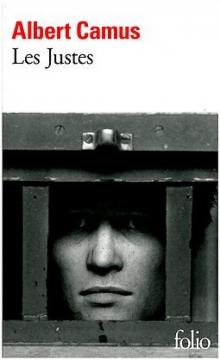 Les Justes
Les Justes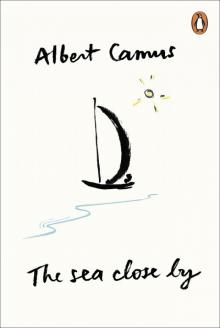 The Sea Close By
The Sea Close By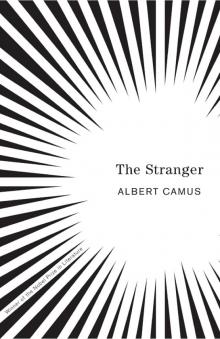 The Stranger
The Stranger The Rebel: An Essay on Man in Revolt
The Rebel: An Essay on Man in Revolt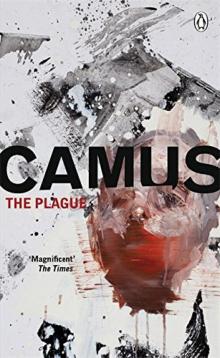 The plague
The plague A Happy Death
A Happy Death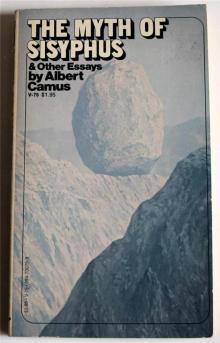 The Myth of Sisyphus and Other Essays
The Myth of Sisyphus and Other Essays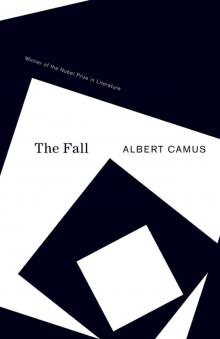 The Fall
The Fall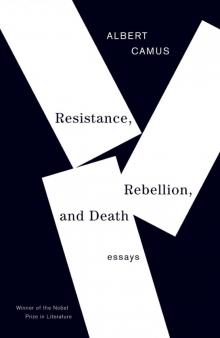 Resistance, Rebellion, and Death
Resistance, Rebellion, and Death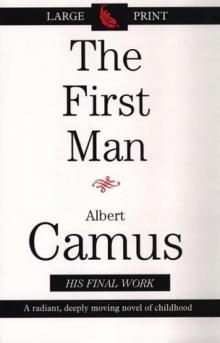 The First Man
The First Man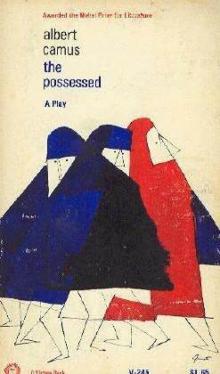 The Possessed
The Possessed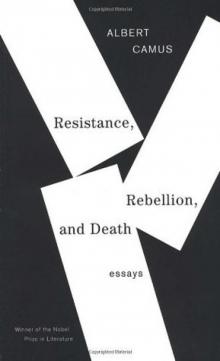 Resistance, Rebellion and Death: Essays
Resistance, Rebellion and Death: Essays